Created and released as part of the 10th Anniversary of the now-legendary Gundam franchise, Mobile Suit Gundam 0080: War in the Pocket (1989) signified a departure from what came before. Directed by Fumihiko Takayama (whose portfolio includes Macross and RahXephon) and with a screenplay by Gainax co-founder Hiroyuki Yamaga, this critically acclaimed six-episode OVA marks the first time a major Gundam project was handled by someone other than series creator Yoshiyuki “Kill ‘Em All” Tomino. More than this, however, it also signifies another giant leap for the saga, all while being a solid work in its own right.
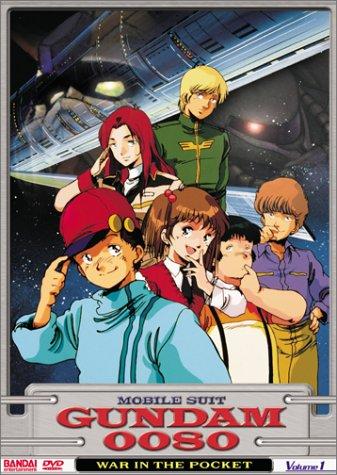
To understand why, you needn’t look far.
Small Fish in a Big Pond
The opening battle sequence of 0080, though seen early on, does a good job setting up the more grounded and somber tone of the OVA. Circa 1989. (Source: YouTube)
Despite the title, 0080 technically takes place in UC 0079, towards the final stretch of the “One Year War” seen in the original Mobile Suit Gundam (1979). As the conflict reaches its bloody climax, the Principality of Zeon catches a whiff of the prototype RX-78NT-1 Gundam “Alex,” that winds up at a Federation facility hidden in a space colony at Side 6, called Libot. Its supposed neutrality is ignored as the special “Cyclops Team” is sent in to intercept or destroy. All the while, the many civilians living there, including an 11-year-old schoolboy named Alfred “Al” Izuruha (Daisuke Namikawa, Brianne Brozey), go about their daily lives, unaware of the carnage soon to ensue.
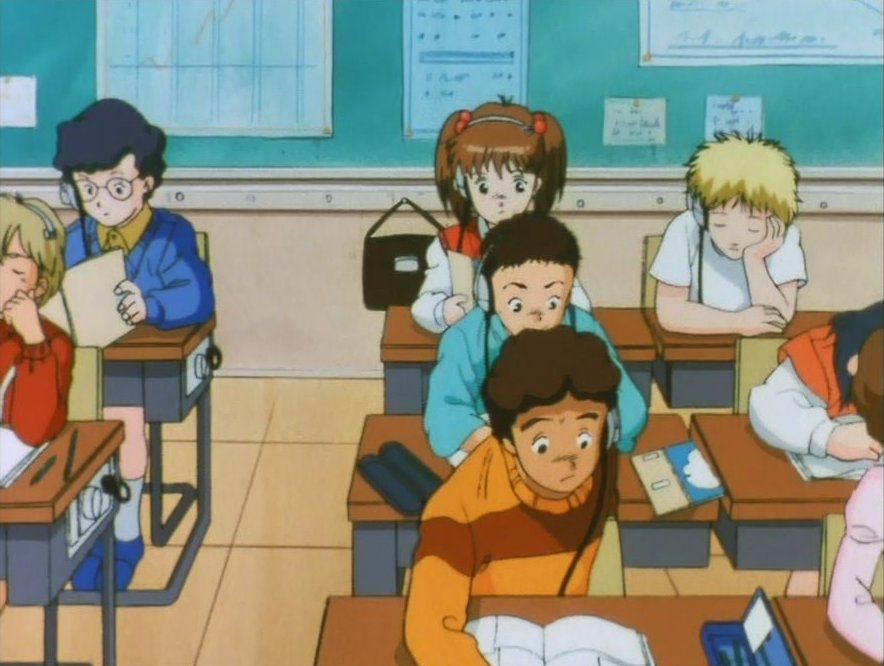
From the get-go, what catches your attention is the OVA’s more modest scale compared to the sweeping Char’s Counterattack (1988). The “pocket” of peace that Side 6 is tucked away in, away from the thick of the bloodshed, stands in contrast to the glimpses seen in earlier entries like Zeta Gundam (1985-86) or Gundam ZZ (1986-87). You get to see more of an “everyman” view of the Universal Century. Whether it’s pedestrians going about their routines or regular school banter; at points, it can almost come across as something out of a slice-of-life anime. Even the (ultimately ill-fated) mission undertaken by the Cyclops Team can seem comparatively small when put in to the wider conflict, with overarching antagonists like Gihren and Kycilia Zabi not even being mentioned by name.
This extends to the cast, designed by Haruhiko Mikimoto. The main focal characters, whether it’s Alfred himself, his neighbor/Federation test pilot Christina “Chris” Mackenzie (Megumi Hayashibara, Wendee Lee), and Zeon rookie Bernard “Bernie” Wiseman (Kōji Tsujitani, David Hayter), are a break from earlier protagonists in more ways than one. Unlike Amuro, Kamille, or Judau, for instance, Al really is nothing more than an average boy who generally acts as most kids would in his stead. Chris, meanwhile, is the first female Gundam pilot lead, both gentle and strong-willed. Then there’s Bernie, who comes to befriend the other two (posing as both an “older brother” to Chris and a mobile suit ace to Al), even as he strains to complete his mission. The dynamics among these three alone, combined with solid voice acting, come off as very down-to-earth and relatable. The rest of the characters are varied yet similarly grounded, ranging from the firm yet fair Steiner Hardy (Yōsuke Akimoto, Barry Stigler) and his Cyclops Team, to the sociopathic Lt. Col. Killing (Takumi Yamazaki, Dan Woren). Which is to say nothing of the different civilians, engineers, and soldiers who populate Libot, many of whom are shown simply going about their lives or duties.
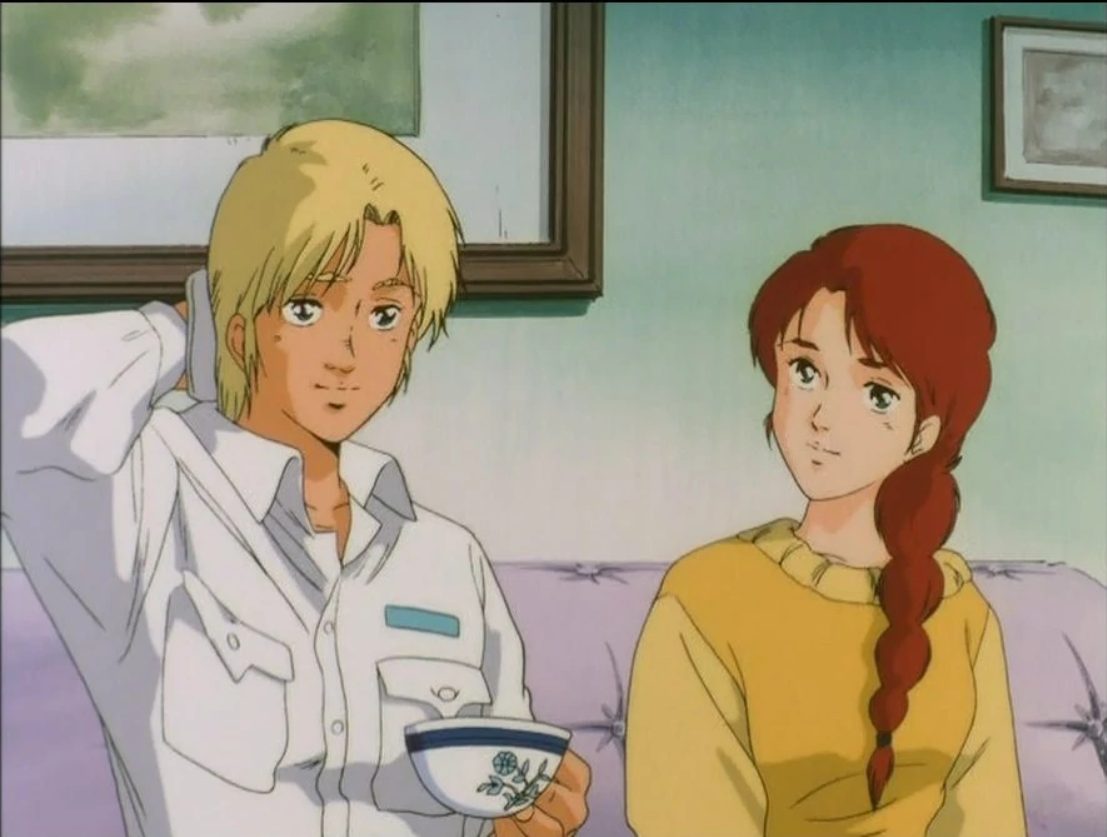
There are no psionic “Newtypes” to be found in the OVA, nor is there much in the way of grand setpieces like the climactic Battle of A Baoa Qu. Just people from both sides, and everyone else caught in between. All of whom, in one way or another, are caught up in something far bigger than themselves, with tragic consequences.
The Glories and Horrors of War
Even during the proverbial calm before the storm, War in the Pocket doesn’t waste time showing or alluding to the wider conflict. The second episode (“Reflections in a Brown Eye”), for example, has Al passing by the wreckage left behind by a mobile suit skirmish, while also showing crowds gathering around to see what’s left. It’s not until the fourth one (“Over the River and Through the Woods?”), however, as the Cyclops Team and their MS-18E Kämpfer spring into action, that the One Year War truly comes into clear, brutal view.
https://www.youtube.com/watch?v=aZErQik981w
A fan-made audio remastering of both the Kämpfer battle sequence paralleled with the hangar firefight, showing awe-inspiring sights and harrowing realities all at once. Circa 2019. (Source: YouTube)
The detailed designs on both people and mechs, combined with crisp animation, do a good job bringing the various battles to life. More than just the usual spectacle, however, the OVA makes a point to show both the ensuing collateral damage and the grim aftermath to an even greater extent than earlier Gundam shows. The aforementioned Kämpfer sequence is a sight to behold, though you’d soon notice things like a shot down mobile suit crashing into a street filled with people fleeing the carnage. The firefight inside the Federation hangar is also a particularly brutal affair, with little embellishment as most of the Cyclops Team wind up dying. Which isn’t getting to the climactic, tragic battle between Bernie and Chris (in their Zaku II Kai and Gundam respectively), unaware of who they’re really fighting or that the stakes involved were ultimately for naught.
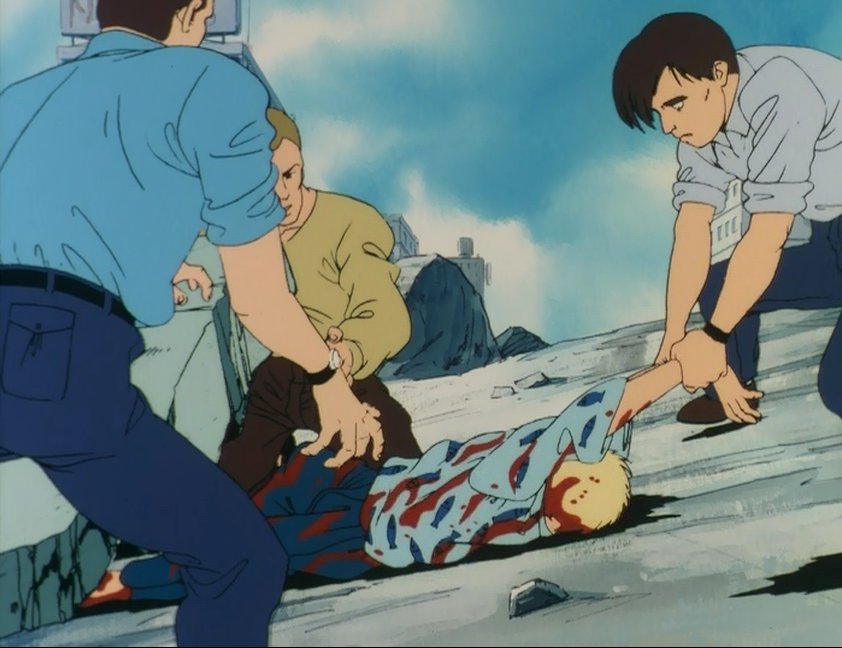
Make no mistake: don’t expect a happy ending. Just as Al, innocently enamored by mobile suits and conflict, discovers the hard way over the course of the series, you get a front-row seat to war being hell. More than just death or the blurring between “good and evil,” 0080 makes a point to show how the turmoil of the One Year War can tear relationships apart, could make some become deranged lunatics and others heroes, and leaves everyone suffering.
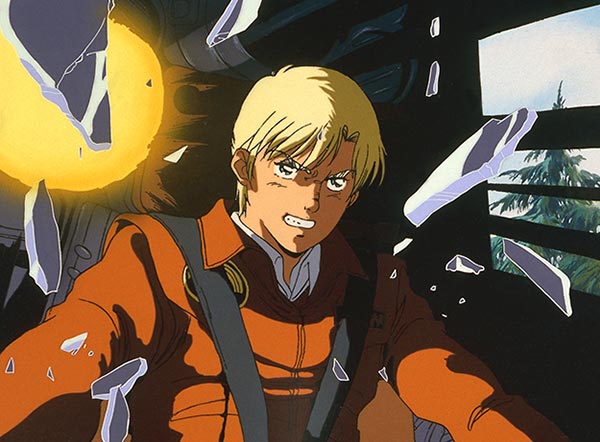
This could come off for some fans as too bleak, if not an outright jab by Takayama and Yamaga at the franchise (foreshadowing the “Wow Cool Robot” meme). It’s nonetheless executed well and, alongside the dissonant yet apropos music by the late Tetsurō Kashibuchi (with Megumi Shiina performing the opening theme “Reach Out to the Sky Someday”), really makes you feel the anguish of the surviving cast by the end.
Tomino himself, in an April 1989 interview with Newtype magazine, approved.
A Series of Firsts
It comes as no surprise that 0080 has long since received accolades from critics and fans alike. Kevin Pezzano of RevolutionSF describes it as “too important to NOT watch.” Ollie Barder on Forbes, meanwhile, calls it “heartbreaking” and a welcome introduction to the Gundam saga. The 2017 remastered version alone sold 6,352 copies, and ranked third on Oricon’s Blu-ray Disc Ranking for August 28th–September 3rd of that year.
Japanese trailer for the remastered version Blu-ray of 0080. Circa 2017. (Source: YouTube)
This isn’t to ignore, however, how it helped set the stage for juggernaut that exists today. For one, it started the “tradition” of retroactive redesigns. Whether it’s the outfits or the mobile suit themselves (especially seen with the Zaku II Kai), the creators made a point to update the aesthetics to the times while still being consistent, leaving their own mark in the process. This would carry over into successive entries, most (in)famously with Gundam Wing: Endless Waltz (1997–98) and the adaptation of Mobile Suit Gundam: The Origin (2015–18).
War in the Pocket also showed that a Gundam work could stand on its own beyond Tomino’s shadow. The series would lay the groundwork for later Universal Century OVAs made without the direct hand of the franchise creator, like 0083: Stardust Memory (1991–92), The 08th MS Team (1996–99) and eventually, Thunderbolt (2015–17). To say nothing of the various other spin-offs, films, and alternate continuities made by various people, each with new touches and takes on the underlying themes from what began in 1979.
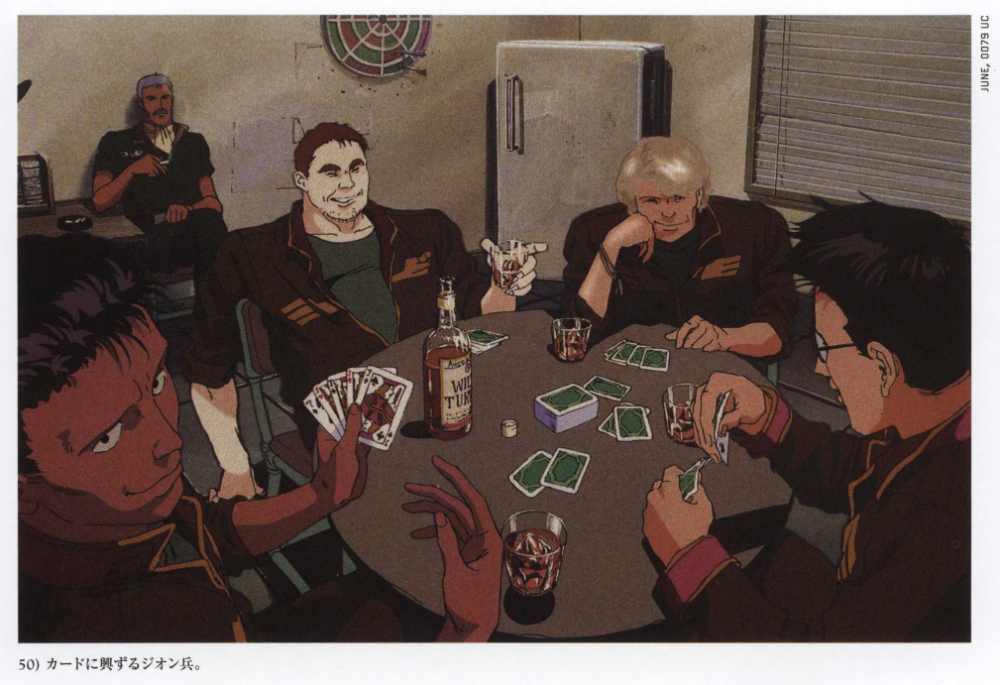
For being the first to star “Oldtypes” rather than Newtypes, War in the Pocket similarly marked the point wherein even more focus began being placed on regular people (soldiers or otherwise) and on greater realism (or at least suspension of disbelief). More than inspiring later protagonists as varied as Kou Uraki and Io Fleming, this also helped in attracting (and setting up a niche for) new audiences more interested in the “grounded” elements of the universe than others.
As emotional and tragic as the OVA is, it’s also inspired more than a few memes among the Gundam fandom, cashing in on the black comedy to be found in certain deaths and its coincidental “Christmas Special” motifs. Circa 2014. (Source: YouTube)
It’s not hard to see why 0080 still leaves such a lasting impact long after its release. So much so that characters and mechs from that series have popped up in video games, manga, supplemental lore, and various other works over the years. Evidently, it’s shown that Sunrise hadn’t forgotten it, either, with Gundam Build Fighters (2013–14) even giving Chris, Bernie, and Al a proverbial bone.
Given the horrors and anguish encountered in the OVA, it’s as close to a happy ending as you’d get.


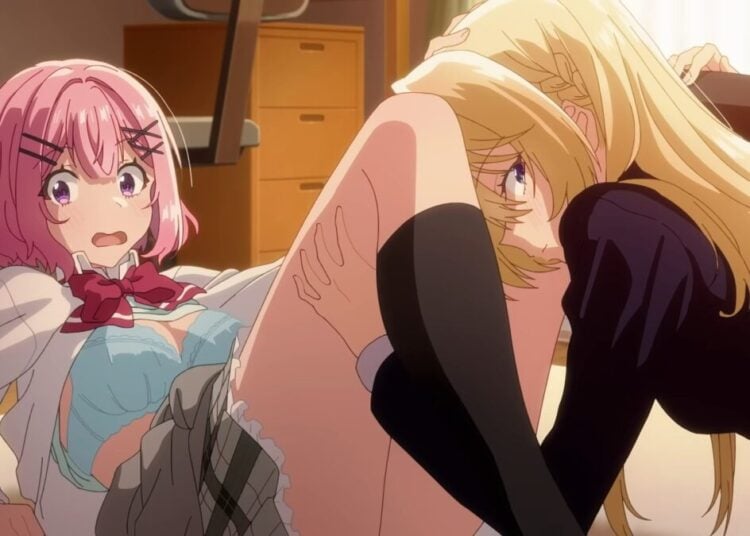
![Sawaranaide Kotesashi Kun Episode 12 [END] Featured Image](https://blog.jlist.com/wp-content/uploads/2025/12/Sawaranaide-Kotesashi-kun-Episode-12-END-Featured-Image-750x536.jpg)










